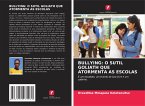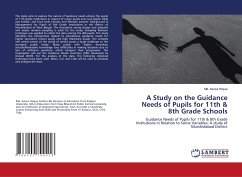Schools are primary locations of aggressive peer interactions because adolescents spend much of the day interacting with peers. Hence bullying always occur within the peer context. Bullying comprises of a variety of behaviors. It can be a physical or verbal attack and relational like excluding or marginalizing victims. Boys physically attack their victims whereas girls are prone to relational bullying. Most adolescents view bullying as wrong and they recognize its harmful consequences. Therefore, school administrators and teachers should create a safe and emotionally supportive school climate. Since teachers often have difficulty-detecting signs of distress in victims, it would be ideal to train them to identify signs of victimization in their students. Further, they should be specifically trained in in effective ways of intervening in bullying episodes starting from breaking up a fight to addressing a spreading rumour. School based aggression prevention programs should be implemented as one manner of addressing school-wide bullying. The programs should consider enhancing students' education regarding the serious nature of victimization and ways to assist victimized peers.
Bitte wählen Sie Ihr Anliegen aus.
Rechnungen
Retourenschein anfordern
Bestellstatus
Storno








